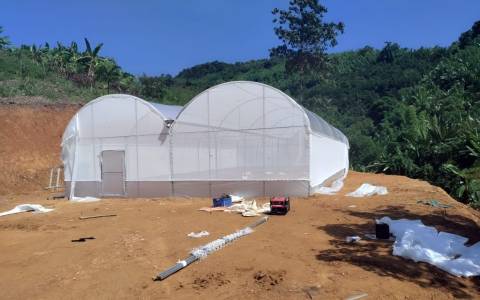Description
Protected Cultivation: Maximizing Crop Yields and Quality Year-Round
Protected cultivation represents a revolutionary approach to agriculture, offering significant advantages over traditional open-field farming. By creating controlled environments, growers can optimize plant growth, leading to higher yields, improved quality, and extended growing seasons. This comprehensive guide explores the various aspects of protected cultivation, from the different structures and technologies involved to the environmental considerations and economic benefits.
Key Features & Benefits:
- Extended Growing Seasons: Harvest crops throughout the year, regardless of weather conditions. Escape the limitations of traditional seasonal farming.
- Increased Yields: Optimize growing conditions to maximize plant productivity and fruit/vegetable size. Expect significantly higher yields compared to open-field farming.
- Improved Crop Quality: Control environmental factors like temperature, humidity, and light to produce higher quality, more consistent produce with improved shelf life.
- Reduced Pesticide Use: Controlled environments minimize pest and disease infestations, reducing reliance on chemical pesticides. Promote sustainable and environmentally friendly practices.
- Water Conservation: Efficient irrigation systems within protected structures minimize water waste and optimize water usage.
- Enhanced Soil Management: Protected environments allow for better soil management techniques, improving soil health and fertility.
- Climate Change Resilience: Shield crops from extreme weather events, ensuring stable production even during periods of climate variability.
Types of Protected Cultivation Structures:
This guide covers a wide range of protected cultivation structures, including:
- Greenhouses: Detailed explanations of various greenhouse designs, materials (glass, polycarbonate, polyethylene), and ventilation systems. We explore both simple and high-tech greenhouse options.
- High Tunnels/Polytunnels: A cost-effective solution for smaller-scale operations, focusing on construction, ventilation, and climate control.
- Shade Nets: Suitable for specific crops requiring protection from excessive sunlight or harsh weather conditions. We detail their application and benefits.
- Screen Houses: Combine the advantages of greenhouses and open-field farming, offering various levels of protection.
Technologies and Techniques:
Explore advanced technologies utilized in protected cultivation:
- Climate Control Systems: In-depth analysis of temperature regulation, humidity control, and ventilation systems.
- Irrigation Systems: Discussion on drip irrigation, fertigation, and other efficient water management techniques.
- Nutrient Management: Strategies for optimizing nutrient delivery and maintaining soil fertility within protected environments.
- Pest and Disease Management: Integrated pest management (IPM) strategies, biological controls, and disease prevention techniques.
- Lighting Systems: Supplementing natural light with artificial lighting to extend the growing season and enhance plant growth.
Economic Considerations:
We provide valuable insights into the financial aspects of protected cultivation:
- Initial Investment Costs: Detailed breakdown of costs associated with structure construction, equipment, and technology.
- Operational Costs: Analysis of energy consumption, labor, and maintenance expenses.
- Return on Investment (ROI): Assessment of profitability and long-term economic benefits.
Environmental Impact:
This guide addresses the environmental implications of protected cultivation:
- Sustainability: Exploring eco-friendly practices and minimizing the environmental footprint.
- Water Usage and Conservation: Highlighting strategies for efficient water management.
- Energy Consumption: Analyzing energy efficiency and the use of renewable energy sources.
This comprehensive resource equips readers with the knowledge and understanding necessary to successfully implement protected cultivation techniques, leading to increased efficiency, profitability, and sustainability in agricultural production.
